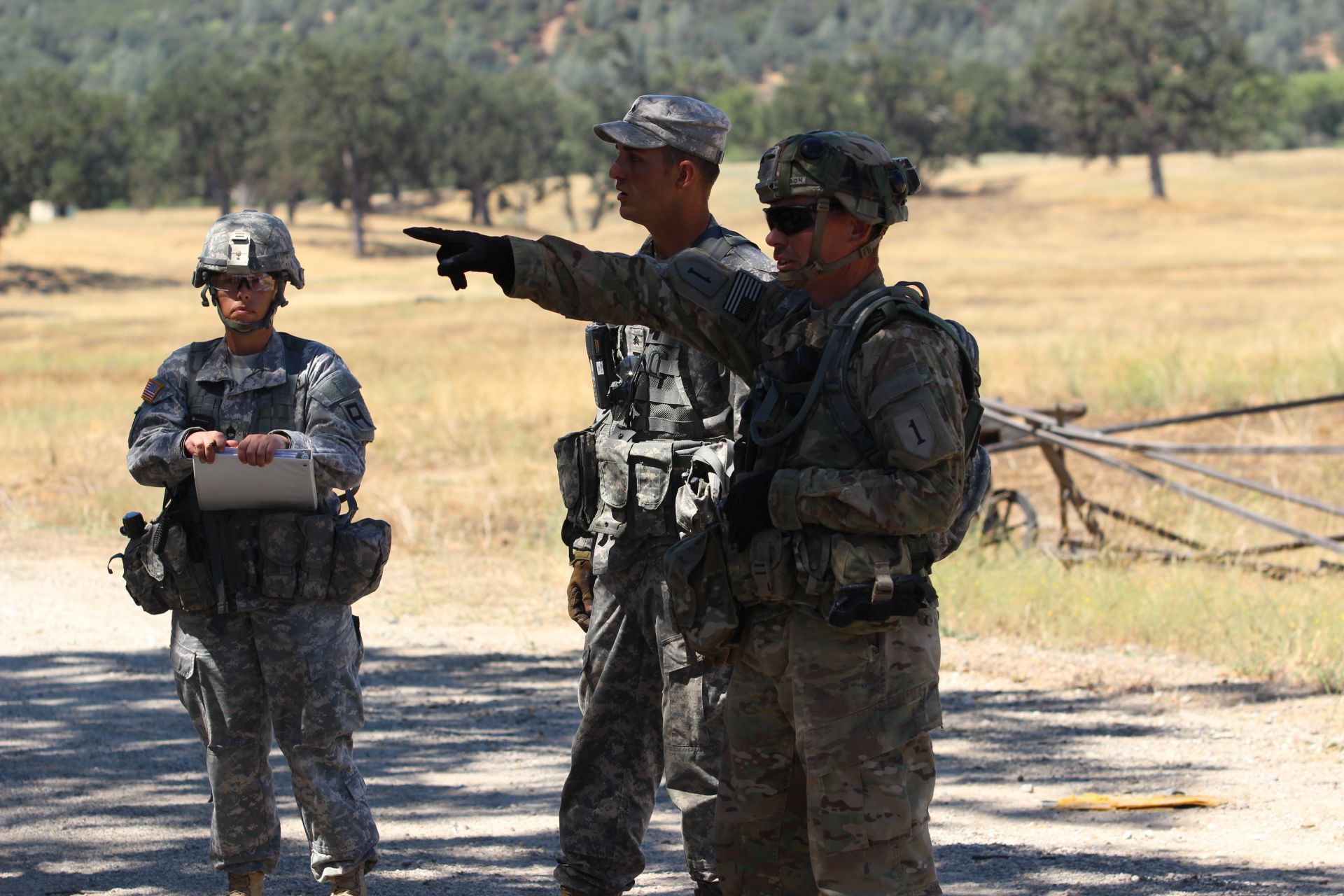Soldiers from the 1st Battalion, 16th Infantry Regiment, 1st Armored Brigade Combat Team, 1st Infantry Division, partnered with the 91st Training Support Division, July 10 through Aug. 7, during Warrior Exercise, or WAREX, 15-03.
Lt. Col. Paul McCarthy, deputy commanding officer, 91st Training Support Division, said the WAREX was designed to provide relevant and realistic training to reserve-component forces while reinforcing the Total Army concept.
“The Total Army Concept is the integration of National Guard and Army Reserve forces components with active-duty components,” McCarthy said. “Having Soldiers training alongside each other increases our effectiveness on the battlefield.”
McCarthy said the WAREX trained more than 5,000 combat service support Soldiers actions on contact, small-arms fire, civilians on the battlefield, complex ambushes to increase their functional capabilities and how to recognize improvised explosive devices.
“This was my first time working with active-duty Soldiers on recognizing IEDs and observing ambushes,” said Capt. Melinda Poole-O’Bannon, a veterinarian with the 445th Medical Detachment Veterinary Services, U.S. Army Reserve. “We rarely participate in training like this–it was stressful, but very good.”
Staff Sgt. Patrick Naragon, a tank commander with Company D, 1st Battalion, 16th Infantry Regiment, 1st Airborne Brigade Combat Team, 1st Infantry Division, said sometimes it was a challenge working with some of the National Guard and Reserve Soldiers due to their lack of previous experience on some of the lanes.
“I had to tell my Soldiers to take it slow,” Naragon said. “We have veterinarian and other support personnel that don’t train on this stuff on a regular basis like we do.”
Naragon, a native of Mesa, Arizona, said being a part of this exercise has been a very rewarding experience, not just for him and his Soldiers, but also for the National Guard and Reserve Soldiers they have been training.
The month-long exercise incorporated intense field training and allowed the Soldiers to improve their functional, collective warrior tasks.
Lt. Col. Trent Upton, commander, 1st Battalion, 16th Infantry Regiment, 1st Airborne Brigade Combat Team, 1st Infantry Division, said his battalion mobilized more than 120 Soldiers to support the 1st Brigade, 34th Infantry Division’s WAREX and helped prepared them for their future deployment.
“This training allowed us to exercise our systems,” Upton said. “We conducted a Level III Emergency Deployment Readiness Exercise, which trains company leaders and the battalion staff on their roles in deploying Soldiers.”
Upton, a native of Reedsville, Ohio, said opportunities like these have strong implications that go beyond assisting the reserve-component with rotational support.
“They have benefits at multiple levels that support the Total Army Concept of multi-component training,” Upton said. “Building relationships and understanding each component’s capabilities, strengths and weakness in a training environment helps us be more effective when we deploy to respond to contingency operations as one team.”
McCarthy said when the Navy, who were also training at Fort Hunter-Liggett, requested opposing forces support from 91st Division (Training Support), he asked 1st Battalion, 16th Infantry Regiment, if they could support.
“Team Wolf Pack enablers provided a training scenario that the Naval Forces weren’t accustomed to,” said Capt. Robert Moore, commander, Company D, 1st Battalion, 16th Infantry Regiment. “They enjoyed our versatility in role playing and our ability to utilize various training aides to inflict stress.”
Upton said many of the senior leaders within the 91st Division (Training Support) had expressed to him the wonderful opposing force support his unit provided during the exercise.
“I am very proud of the Soldiers that are out here,” Upton said. “It is a testament to their professionalism and hard work.”
Upton said as a commander it felt good to hear others saying positive things about his troops.
“Your Soldiers are rock stars,” McCarthy said. “They are the best opposing force Soldiers we have ever had during any of our exercises. They understood combat operations in multiple area of operations and were capable of giving a realistic look to different training audiences.”










